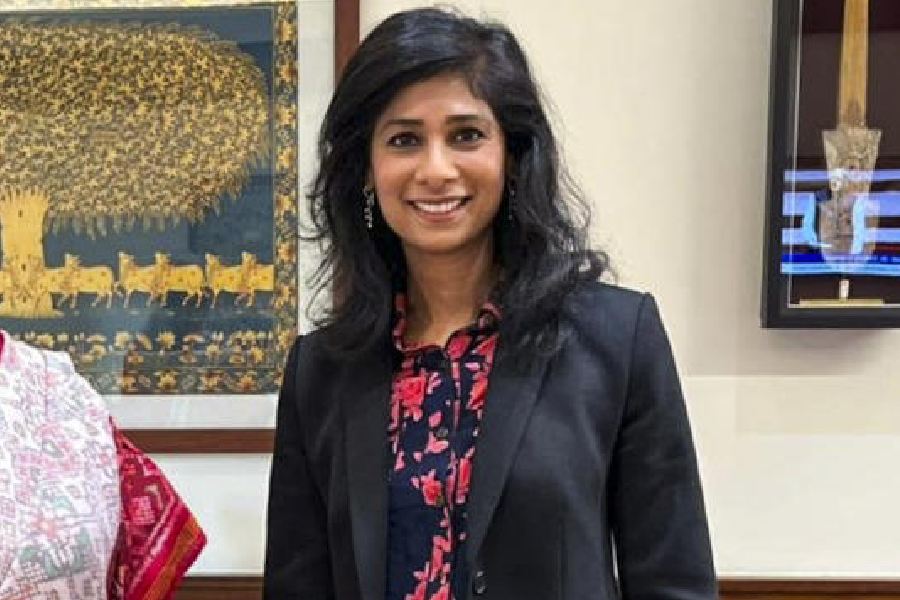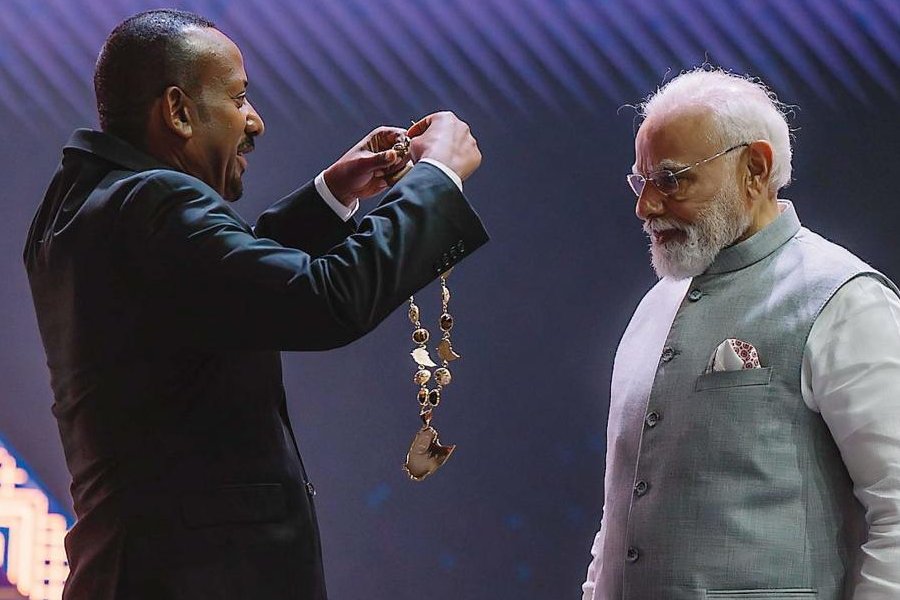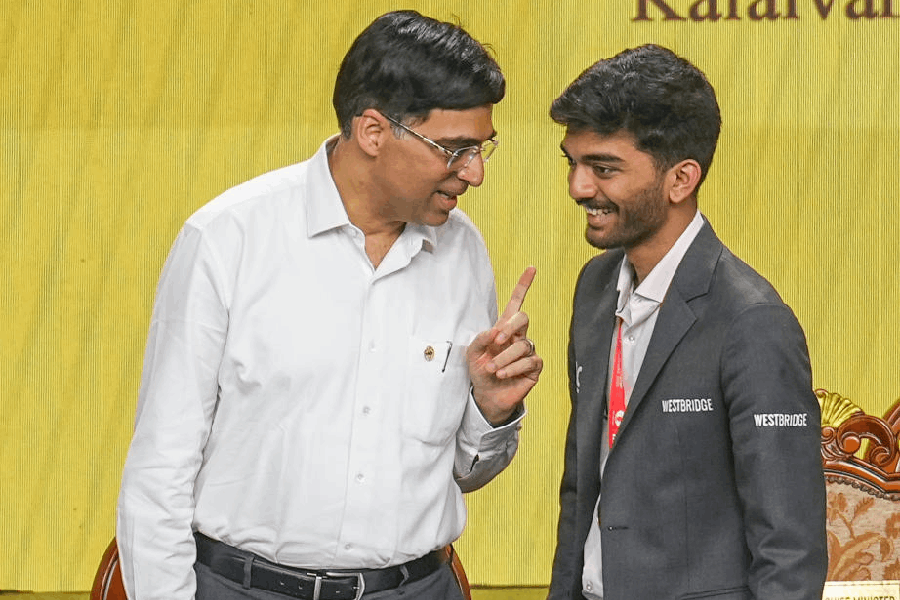 |
 |
 |
 |
 |
| (From top) Benazir Bhutto, Sheikh Hasina, Khaleda Zia, Chandrika Kumaratunga and Mamata Banerjee |
For years, Khaleda Zia and Sheikh Hasina parcelled out Bangladesh between themselves, driving a dark knife right through the centre of the political spectrum. If it wasn’t the Bangladesh Nationalist Party, it was the Awami League. Journalists, doctors, lawyers, college teachers — no group was immune to the party flag.
So when the Army moved in to take charge of Bangladesh on January 11 this year, the coup was simply completed. The country, on the verge of a civil war-like situation, seemed ripe for a takeover.
Now Khaleda is rumoured to be brokering a deal with the Army to let her and her two sons, Tarique and Arafat, leave Bangladesh and live happily ever after in Saudi Arabia. Hasina, on the other hand, is already in the US, visiting her son and ailing daughter-in-law. It is believed that she may want to stay back too, at least in temporary self-exile.
Khaleda and Hasina seem to be doing what Benazir Bhutto of Pakistan did years ago. But even in determinedly democratic Sri Lanka, the curse of the sisterhood seems to have spread. Chandrika Kumaratunga, daughter of parents who were both Prime Ministers and twice-over President herself, had to make way for Mahinda Rajapakse just over a year ago when the peace talks with the LTTE failed to take off.
Back in India, too, the charms of some women leaders seem to be wearing thin. Vasundhara Raje in Rajasthan is dealing with at least one internal revolt a week. Iron Lady-cum-‘Puratchi Thalaivi’ Jayalalithaa lost the Tamil Nadu elections last year. And Uma Bharati, once a rising star, has been booted out of the BJP.
So whatever happened to the Asian phenomenon of women on top?
There was a time when the East was red and its daughters — fiery and fearless — led the charge of their respective national brigades. Indira Gandhi was synonymous with India, Benazir had discarded the Oxford bags of her youth to become Prime Minister of Pakistan, while Chandrika, with the assassinated body of her husband as witness, swore to keep alive her father’s political legacy in Sri Lanka.
Over the years, Khaleda and Hasina became major stars on the Bangladeshi firmament. Megawati Sukarnoputri won power in Indonesia. And as Burma gave way to Myanmar, Aung San Suu Kyi married an Englishman but returned to fight — and win, then lose again — the political fight in Yangon.
Wives and widows, daughters and mistresses — all these women sat astride the Asian landscape. These were Asia’s tigresses and, as many an anonymous male commentator refusing to rise above the cliché put it, they didn’t hesitate to flaunt their unsheathed claws. In the hurly-burly at home, too, women — from Bharati to Mayawati, Jayalalithaa and Mamata Banerjee — were beginning to make their presence felt. Clearly, Asia’s women leadership had collapsed the spectrum between the ‘devi’ and the ‘devadasi.’ They had arrived. Or had they?
In retrospect, it seems as if the dreams died first. Khaleda, who took power after her husband was assassinated in 1981 and ran her party and the country for many years since, fell prey to the doting-son syndrome, Asia’s worst endemic disease. It is said that she loved watching Indian saas-bahu serials at home, while her elder son, Tarique Rahman, ran the country in her name, amassing untold wealth. Two weeks ago the army-backed government in Dhaka threw him in jail.
The enmity of Khaleda and Hasina for each other destroyed the country. “Instead of behaving like politicians, they behaved like silly women, thereby allowing the Army to take advantage of the situation,” said a Bangladeshi journalist.
Why, then, were Asia’s women leaders unable to transform the political dynasties they had inherited into national ideas of their own making? Benazir, for example, would rather sit in air-conditioned comfort in Dubai and London and continually complain about General Musharraf’s dictatorship instead of taking the first flight back to Pakistan and risk being arrested.
Former foreign secretary Shyam Saran, who has served in Indonesia as ambassador, points out that “it is not enough to have name recognition, you must be able to govern as well.”
Megawati may have cashed in on her surname and liberal Muslim family values when she won her election, but she lost to Yudhyono because she was unable to govern Indonesia. In her time, the province of Aceh continued to burn with separatist desire, but Yudhyono was able to persuade Aceh’s chief rebel to become governor. Similarly, Yudhyono has seemed to walk the fine line between Islamic fundamentalism and liberal views much more ably.
Chandrika, meanwhile, was unable to keep power because she could not put aside her political differences with arch-rival Ranil Wickeramasinghe and take the peace process with the LTTE to its bi-partisan conclusion. “Chandrika failed to carry the opposition with her, she couldn’t let Ranil take credit for ending the civil war in Sri Lanka,” said one analyst. When the peace process began to falter, she had to make way for Rajapakse.
Nasim Zehra, a Pakistani analyst, points out that Asian women leaders are often unable to sustain victories not because they don’t have what it takes but because threatened patriarchies gang up to pull them down again.
Male detractors jeered at women politicians. Indira Gandhi’s inner circle was referred to as the “kitchen Cabinet.” Sirimavo Bandaranaike, the world’s first woman Prime Minister, who was also Prime Minister of Sri Lanka three times, was often referred to by her detractors as a “kitchen woman.” But as political analyst Coomi Kapoor points out, Mayawati is a classic case of a woman leader who hijacked the BSP from under her patron Kanshi Ram’s nose, even before he was disabled by his stroke. Today, Mayawati, seems all set to storm Uttar Pradesh in the coming elections.
“It is much easier to pillory women politicians like Mamata Banerjee and Uma Bharati as strident and hysterical, but when male leaders like Laloo Yadav do the same it’s considered a joke,” says Kapoor.
And while women in the West struggled with the virtues of monogamy, Jayalalitha showed the stuff she was made of by wresting the party mantle from M.G. Ramachandran’s wife, Janaki. Many observers feel that in the next elections in Tamil Nadu, Jayalalithaa and her AIADMK will be back with a bang.
As Somini Sengupta, India correspondent of The New York Times, points out, “South Asia appears unusual for the number of women politicians it has produced, except that so many have been thrust into public life because of the men in their families.”
Meanwhile, it is in the enigmatic figure of Sonia Gandhi that the current debate comes together. As the ultimate outsider, in the 2004 elections the Gandhi widow delivered the country to the Congress party. Son Rahul remains the reluctant heir, even though he has been propelled into the political limelight, while Priyanka, widely acknowledged as the inheritor of her grandmother’s legacy, has chosen not to compete with her brother.
Like everything else, then, the truth about Asia’s women leaders also lies somewhere in between. While dynasties offer brand recognition in the midst of the madding crowd, the truth is that dynasty will have to make way for grassroots leaders such as Mayawati, Jayalalithaa or Mamata Banerjee, because it is these women who are consumed with the need to connect with the masses. If dynasties don’t bother to reinvent themselves, they will be condemned to all glitter and no gold.










